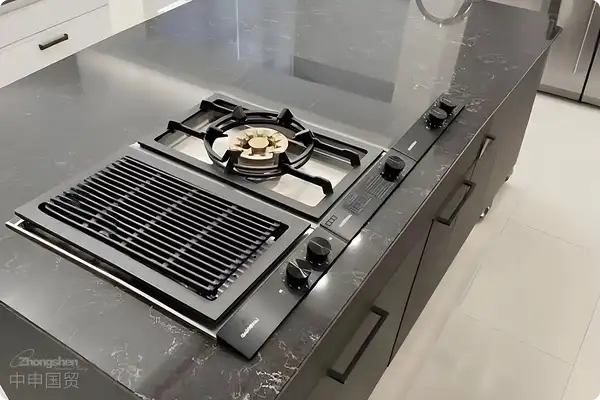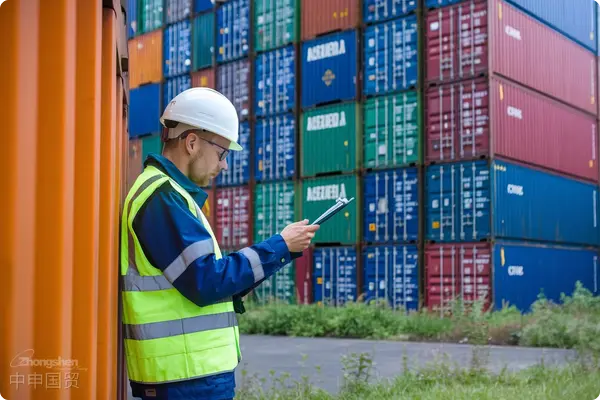- Shanghai Zhongshen International Trade Co., Ltd. - Two decades of trade agency expertise.
- Service Hotline: 139 1787 2118

I. The customs clearance password for importing induction cookers: HS code and regulatory conditions
As an old hand in importing kitchen appliances, every time I take on an induction cooker project, I will first play a number game with the client - confirm the HS code. Household induction cookers are usually classified under60with an import tariff of about 10% (most - favored - nation tariff rate) and a value - added tax of 13%. But note:
- Combination cookers with oven function may be classified under 8516.60.90
- Commercial induction cookers may apply the 8516.60.10 code
Last week, a client overpaid 5% in tariffs due to misreporting the code, which reminds us:Small differences in product functions may lead to a tax difference of tens of thousands. The customs consumption tips also particularly emphasize that it is necessary to check key parameters such as the rated voltage and power on the product nameplate.
II. CCC certification: The pass for importing induction cookers
As the customs tips say, induction cookers belong tomandatory certification products. In the cases I have handled, about 30% of customs clearance delays are due to certification issues:
- A common mistake made by new clients: thinking that CE certification can replace CCC
- Hidden Minefields: Accessories such as power cords and plugs also require separate certification
- Special Circumstances: Import of samples can apply for exemption, but limited to within 3 units
When importing for a certain German brand last year, we encountered the situation of missing plug certification. Finally, throughBonded area warehousing + Domestic supplementary certificationscheme, the loss of returning the whole batch of goods was avoided.
III. Customs clearance practice: The challenge - passing journey from booking space to picking up goods
According to the product characteristics emphasized in the customs notice, we formulated a special customs clearance plan:
- Pre - preparation Stage: In addition to the regular contract and invoice, pay special attention to collecting energy efficiency label documents
- Maritime TransportationLink: Require the supplier to affix the Anti-tilt label on the packaging (the internal coil of the induction cooker is vulnerable)
- Customs Declaration Stage: Prepare a compliance statement in advance to deal with possible energy efficiency spot checks
Special Reminder: For induction cookers,the magnetic components may trigger the customs X-ray machine alarm, it is recommended to report in advance. In March this year, a batch of imported goods from Japan was inspected and opened for this reason. Fortunately, we prepared the coil material certificate and completed the inspection and release within 2 hours.
IV. The business sense in consumption tips: Import product selection guide
The consumer tips from the customs actually contain the secrets of product selection:
- Certification Compliance: Give priority to models that have obtained CCC certification, which can save 1 - 2 weeks of certification time
- Product Design: Choose products with dry-burning prevention and overheating protection functions to reduce after-sales risks
- Channel Management: It is recommended that customers require overseas suppliers to provide Chinese instruction manuals (a key point for customs inspection)
One of the Italian brands we cooperate with adopted these suggestions, and the complaint rate of its products decreased by 60% after they were launched. Remember:Smooth customs clearance is just the beginning, and compliance in terminal sales is the long-term way.
V. What to do withoutimport and exportauthority? Detailed Explanation of Dual-Head Customs Declaration
Aiming at the pain points of small and medium-sized importers, we developed theNanny-style agency service:
- The customs declaration form shows: Operating unit (our company) + Consignee (customer)
- Qualification Borrowing: CCC certification and import license are applied for in the name of our company
- Funding Plan: Can advance customs duties (enjoy interest subsidy service if the annual import volume exceeds 500,000)
Last month, we just helped aCross-border E-commercecustomer import 200 Japanese induction cookers using this mode. It only took48 Hoursfrom arrival at the port to entering the bonded warehouse, saving 40% of the time cost compared with the traditional mode.
VI. Special precautions: Dont step into these pitfalls,
Combining years of pit-filling experience, summarize several high-frequency minefields:
- Power Overrating: A certain Korean brand was returned due to the inconsistency between the actual power and the nameplate, with a freight loss of 120,000
- Energy Efficiency Fraud: EU A+++ certification is not equal to Chinas energy efficiency level 1, and re-testing is required
- Packaging Violation: Case where the goods were damaged due to not marking No Rain and the insurance company refused to compensate
It is recommended to conductthird-party pre-inspectionbefore import: Overseas inspection + Document review + Sample testing. Spending an additional 5,000 yuan on inspection fees may avoid a loss of 500,000 yuan.
Finally, here is a professional insight for everyone:Importing induction cookers is like cooking. The heat (customs clearance time), ingredients (documents), and cooking skills (experience) are all indispensable. If you encounter any problems, feel free to communicate with me, the old cook at any time!?
Related Recommendations
? 2025. All Rights Reserved. 滬ICP備2023007705號-2  PSB Record: Shanghai No.31011502009912
PSB Record: Shanghai No.31011502009912









